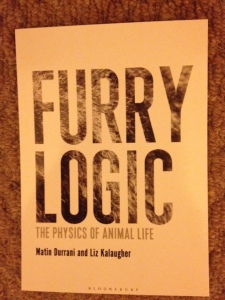
In a beech forest in Sorø, eastern Denmark, boxes of scientific kit measure temperature, carbon dioxide concentration, wind speed and more. Forming just one of the Integrated Carbon Observation System’s stations across Europe, the kit monitors how much of the greenhouse gas carbon dioxide we’re adding to the atmosphere and how much the forest is absorbing.
Hundreds of miles away in Bristol, the data from these boxes feeds into two much larger boxes – giant black speakers that almost span the width of the gallery’s pale grey floor. Depending on the conditions in the forest, the speakers buzz, hum and judder.
Sometimes the noise is like the spin cycle of a washing machine, sometimes it’s roadworks, other times a wonky fan in a motel room. Without knowing exactly which data are making the sound, it’s hard to understand what the noises mean. But deciphering that data to learn the secrets of the forest is complex for scientists too.
Some of the noise is lower than humans can hear and makes the five sculptures on the walls vibrate, though these shudders are too small for me to see. After a while, my chest starts to hum with a jittery, fluttery panic as if giant butterflies are vibrating their wings to warm up before flight.
The sculptures take the shape of satellite dishes but their six near-triangular panels remind me of a child’s eye view of the multicoloured merry-go-rounds in ancient playgrounds, or the wedges of climate solution “pie” – one of which was natural sinks such as forests – in the paper from Stephen Pacala and Robert Socolow back in 2004 that showed we could solve the climate crisis with the technology available even back then (though Socolow later feared they’d made it look too easy).
The first sculpture I see is covered in a red plastic mesh of irregular polygons, like the shapes that form in parched mud. Within these shapes sits a grey pulp – it’s as if someone trapped an estuary’s muddy sand inside a plastic laundry basket.
The other sculptures have black or white or grey mesh and pulp reminiscent of seaside car parks or the concrete around old army buildings. The exhibition guide says the mesh is 3D printed and infused with pulp made from plant fibres from the beech forest and shredded secret documents from the art gallery.
From Bristol, the forest itself feels like a secret, as if the trees have faded and all that’s left is a stark concrete floor where there should be leaf litter and beetles and twigs, and tall white walls instead of the queen of the forest’s smooth grey bark and sunlight dappling through reams of green leaves.
- Hum by Amitai Romm is showing at Spike Island gallery, Bristol until 18th September 2022.

 Hear the name Charles Darwin and the Galápagos Islands might spring to mind, home to giant tortoises and finches with a variety of beak shapes. Or Down House, now in greater London, where the naturalist settled with his wife Emma and strode along his “thinking path”. It’s unlikely your thoughts would turn to Shrewsbury, a mediaeval market town nestled in a loop of the River Severn near the Welsh border. But Darwin was born here back in 1809 and Shrewsbury was instrumental in his life in no less than three ways. That’s according to
Hear the name Charles Darwin and the Galápagos Islands might spring to mind, home to giant tortoises and finches with a variety of beak shapes. Or Down House, now in greater London, where the naturalist settled with his wife Emma and strode along his “thinking path”. It’s unlikely your thoughts would turn to Shrewsbury, a mediaeval market town nestled in a loop of the River Severn near the Welsh border. But Darwin was born here back in 1809 and Shrewsbury was instrumental in his life in no less than three ways. That’s according to 
